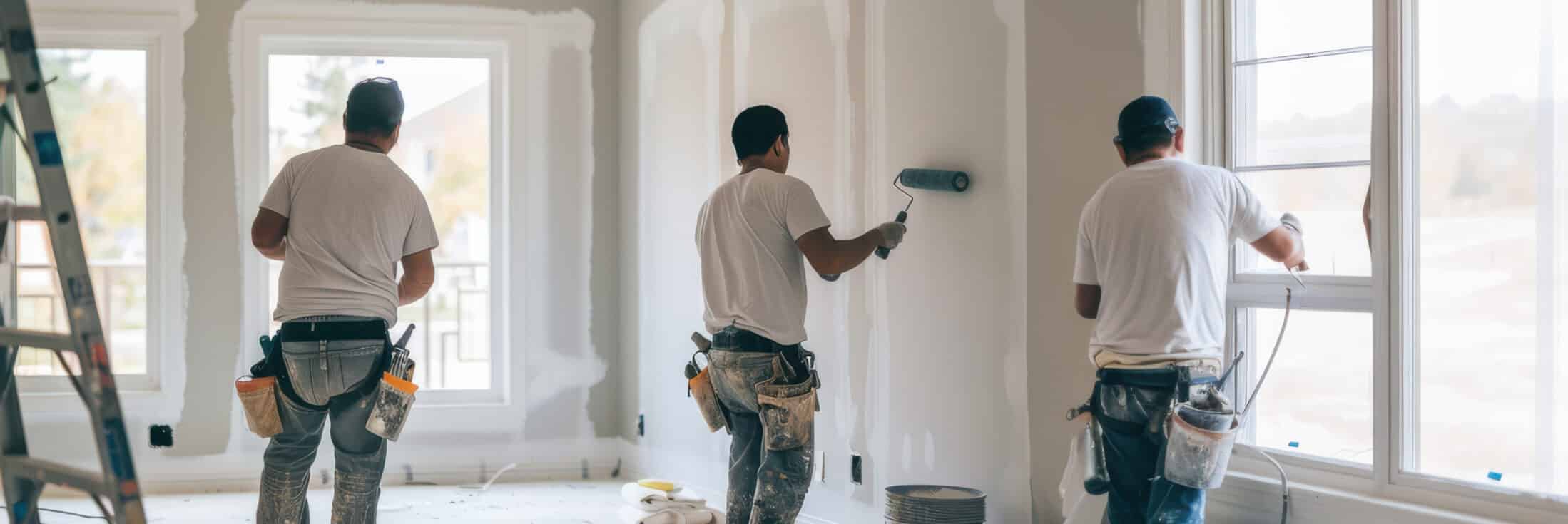
Can You Buy a Fixer-Upper with a USDA Loan? Here's What You Need to Know
Shopping for a home is rarely as simple as people hope. You start with a vision. Maybe you’re picturing a charming farmhouse or a cozy place on the outskirts of town, but what’s available (and what’s in your budget) might not match that dream. That’s where fixer-uppers come in. These properties might lack a few things on your checklist, but the potential to check those boxes after a little work is what counts.
There are two key elements that go into looking for a home to buy: location and the house. If you find a home in an ideal location, but the house itself needs some work, you can always make updates to get it where you want it to be. On the other hand, if you find your dream house in a terrible location, you can’t exactly pick the house up and relocate it.
If you’re looking at homes that need some love, a USDA Loan may be able to help.
Can You Use a USDA House Loan for a Fixer-Upper?
USDA Loans, also called RD or Rural Development Loans, are designed to help buyers purchase homes in rural and some suburban areas with no down payment and affordable financing. They work great for move-in-ready homes, but they can also be used for properties that need repairs, at least within limits.
In order to use a standard RD house loan on a fixer-upper, the home has to meet basic safety and livability standards. That means working plumbing, no major structural issues, and a roof that’s not about to cave in. If the house just needs cosmetic updates like paint, flooring, new cabinets, you’re in the clear. But if it needs big repairs, like a new foundation or rewiring, a regular USDA home loan might not cut it. Luckily, that’s where the RD Renovation Loan comes in.
The RD Renovation Loan
The RD Renovation Loan, or the USDA Repair Loan, is a game-changer for buyers who find a great home that needs more than just a facelift. It lets you roll repair costs into your mortgage, so you don’t have to pay for renovations out of pocket or push repairs off until you have enough cash on hand to cover it. The renovation gets done and you don’t have to pay upfront? It’s a win-win!
With a USDA Repair Loan, you’ll still need to meet the same eligibility guidelines that you would with a standard USDA Loan, including property location and income limits. Another key requirement is that all work must be done by licensed contractors. While it might be tempting to handle some of the repairs yourself, DIY projects aren’t allowed under USDA Renovation Loan guidelines.
What Kind of Repairs Are Covered?
Repairs financed through a USDA Renovation Loan typically include major structural and systems work that brings the home up to safety and livability standards. This can include:
- Roof replacements
- Foundation repairs
- Plumbing & electrical fixes
- Heating &cooling upgrades
- Accessibility improvements
Maybe the house you’ve got in mind needs more repairs than the USDA Repair Loan offers — no sweat! We love a challenge, too! If the house needs more work than the RD Renovation Loan allows, another option is the FHA 203k Loan — a similar renovation loan that only requires 3.5% down and has fewer restrictions.
Standard USDA Loan Requirements
RD Loans come with specific eligibility requirements that buyers need to meet in order to qualify. These focus on the borrower’s income, the property location, and the home’s condition.
Income Limits
USDA Loans are targeted at low- to moderate-income borrowers. In most cases, your total household income must be at or below 115% of the median income in your area. These limits vary based on location and family size.
Location Eligibility
The home must be in a USDA-approved rural or suburban area. Contrary to popular belief, “rural” doesn’t always mean miles away from civilization. Many suburban communities in Michigan and beyond qualify. You can check eligibility on the USDA website or work with a Loan Officer at Treadstone to confirm.
Property Standards
The house must be safe, sound, and sanitary. If the home needs minor repairs to meet these standards, those can often be included in the loan. However, if the home has major issues that compromise its structural integrity, it may not qualify unless you’re using a USDA Renovation Loan.
The Process for Getting a USDA Loan for a Fixer-Upper
The path to securing a USDA Loan for a fixer-upper starts with pre-qualification. This step helps you and your lender understand how much you can afford and whether you meet the basic income and location requirements.
Once pre-qualified, the next step is to find a home and schedule an inspection. The home inspection is critical as it determines whether the home is livable and if any repairs are necessary. If minor updates are needed, they can often be handled through your USDA Loan. However, any major issues must be resolved before closing.
After inspection, your Loan Officer will guide you through underwriting and closing, just like with a traditional home loan.
How to Find the Right Fixer-Upper
When searching for a fixer-upper that qualifies for a USDA Loan, your focus should be on two main areas: location and condition.
First, you’ll need to confirm that the home is in a USDA-eligible area, which your Loan Officer will be able to help with. Second, assess the condition of the property. It doesn’t have to be perfect, but it must be livable. Homes with dangerous conditions or extensive damage likely won’t qualify without using the renovation loan.
Potential Challenges & How to Overcome Them
Like any renovation project, USDA fixer-uppers can come with unexpected hurdles. Major repairs must be completed — or planned and approved — before the loan can close. Contractors may face delays, permits can take time, and renovation estimates may change mid-project. Additionally, USDA Loans usually take 30 to 60 days to process, and homes needing work might require a longer timeline.
Is an RD Loan Right for Your Fixer-Upper?
If you’re buying in a qualified rural or suburban area and meet the income guidelines, a USDA Loan can be a powerful tool to help you turn a fixer-upper into a forever home. Whether you’re tackling minor cosmetic upgrades or financing larger repairs with a USDA Renovation Loan, this program makes homeownership more accessible and even customizable.
How Treadstone Can Help with Your USDA Loan
Ready to make that fixer-upper your dream home? Treadstone is here to guide you every step of the way. Whether you’re just starting to explore USDA house loans or need help navigating the process for a fixer-upper, our experts are ready to help. From pre-qualification to final approval, we’ll ensure the process goes smoothly.
Get in touch with us today to get pre-approved and start turning your vision into reality!
FAQs
What disqualifies a house from a USDA Loan?
A house won’t qualify if it doesn’t meet USDA property standards or isn’t in an approved area. The home must also be safe, sanitary, and livable.
What are the limitations of a USDA Loan?
RD Loans have income limits and can only be used for homes in approved rural or suburban areas. They also require homes to meet livability standards and can’t be used for investment properties or vacation homes.
How can USDA Loans Help With Home Repairs?
For homes that just need minor fixes, like fresh paint, new floors, or a roof repair, RD Loans can often include those costs. These updates help make the home safe and comfortable without needing extra financing.
Can I use an USDA Loan to buy a fixer upper?
You can use a USDA Loan to buy a fixer-upper, as long as the home meets the USDA’s minimum property standards.
Is it hard to get approved for a USDA Loan?
Not necessarily! If your income is within the eligible range, and the home meets USDA’s standards and location rules, getting approved can be fairly straightforward. What really helps in any approval process is working with people you can trust. Having a team with experience, that can answer any questions that come up, makes any mortgage process go smoother.
If you're looking at homes that need some love, a USDA Loan may help

